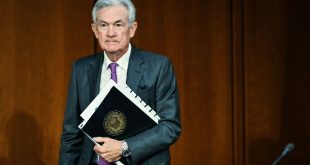On Friday morning, all eyes will be on Wall Street as the U.S. Bureau of Labor Statistics releases its latest employment survey. This report carries significant weight, as it can potentially influence the Federal Reserve’s monetary policy outlook. As a result, the market will likely experience heightened attention and scrutiny, potentially leading to increased volatility as the weekend approaches.
According to consensus forecasts, U.S. employers are expected to have added 180,000 jobs in October, following a gain of 336,000 in September. Additionally, household data is anticipated to reveal that the unemployment rate remained stable at 3.8%, underscoring the ongoing tightness in labor market conditions.
Regarding compensation, average hourly earnings are projected to rise by 0.3% monthly, translating to an annual increase of 4.3%. Pay growth is a crucial metric for the Federal Reserve, serving as an indicator of inflationary trends. Therefore, it is paramount to closely monitor the progression of wages in the broader economy and assess their alignment with the Fed’s 2.0% inflation target. The report’s findings will likely play a significant role in shaping market sentiment and investor decisions.
Possible Market Scenarios:
- Hawkish Repricing Scenario: If the employment survey reports a figure significantly above 275,000 jobs, it could trigger a hawkish repricing of the Fed’s policy path. In this scenario, there’s a high probability of a quarter-point rate rise at the upcoming December Fed meeting. This could lead to a resurgence in U.S. Treasury yields, resuming their upward trajectory after a recent pullback. Consequently, the U.S. dollar might strengthen against major currencies like the euro and the British pound.
- Dovish Scenario: Conversely, if the hiring activity disappoints, confirming a deteriorating economic outlook, it could lead to a continuation of the recent rate retrenchment. In this scenario, the broader U.S. dollar might weaken. This weakness could support pairs like EUR/USD and GBP/USD, enabling them to extend their ongoing recovery. If the job numbers fall below 100,000, it could be particularly bearish for the American currency.
In either case, market participants are likely to closely monitor the employment survey results, as they have the potential to significantly impact market sentiment and shape the direction of various currencies and asset classes.
EUR/USD:
EUR/USD experienced a rebound on Thursday, driven by a general weakness in the U.S. dollar. However, the pair faced resistance between 1.0670 and 1.0695, failing to break through it. To instill further confidence among traders, a decisive move above 1.0670/1.0695 is necessary in the coming days. If this breakthrough occurs, the bullish sentiment could strengthen, potentially leading to a rally towards 1.0765. This level represents the 38.2% Fibonacci retracement of the selloff between July and October.
Conversely, if sellers regain control and push prices below the trendline support at 1.0535, downward momentum might intensify. This scenario could open the door for a decline towards 1.0450. If this level is breached, the next significant area of interest lies at 1.0355. Traders should closely monitor these key levels to gauge potential market movements.
Forecasts
As the anticipated release of the October jobs report from the US Bureau of Labor Statistics (BLS) approaches on Friday, November 3 at 12:30 GMT, analysts and experts from major banks have weighed in with their forecasts for the upcoming employment data.
Wells Fargo
We expect the pace of hiring to slow in October and forecast employers added 190K jobs last month. We forecast the unemployment rate to hold steady at 3.8% in October. We also anticipate wage growth continued to cool in October. Growth in the labor force has helped restrain wage growth even as hiring has remained hot in recent months. We forecast average hourly earnings rose 0.3% in October, which would still translate to the slowest pace of annual wage gains in two years.
Commerzbank
We expect 230K new jobs to have been created in October, which would be roughly in line with the average for the last six months. From the Fed’s point of view, this would probably still be (too) high. Such a gain would not be a signal that the labour market is tightening and that wage pressures are easing. However, as Fed officials have recently tended to tone down expectations of rate hikes despite strong economic data, we would not see such a figure as a reason for a rate hike, at least as long as the Fed’s communication does not change significantly.
ING
Following September’s leap of 336K, the market is expecting a much weaker outcome of 175K in October. Recent jobless claims numbers have suggested that while firing remains historically low, the rise in continuing claims hints at increasing difficulties with finding new work. We expect unemployment to remain at 3.8%, but wage growth could slow to 4% YoY, which would mark a post-pandemic period low. This should offer encouragement to the Fed that pipeline price pressures are easing and that it doesn’t need to raise interest rates any further.
NBF
Hiring could have been subdued in the month if previously released soft indicators such as S&P Global’s Composite PMI are any guide. Layoffs, meanwhile, may have increased slightly judging by a small rise in jobless claims between the September and October reference periods. With these two trends reinforcing each other, we expect job creation to have decelerated to a still decent 175K in the month. The household survey could show a similar gain, a development which would translate into a one-tick decline in the unemployment rate to 3.7%. This call assumes the participation rate slid to 62.7% from 62.8%.
 Noor Trends News, Technical Analysis, Educational Tools and Recommendations
Noor Trends News, Technical Analysis, Educational Tools and Recommendations





